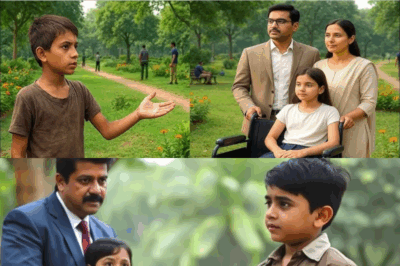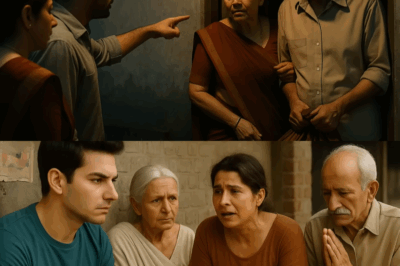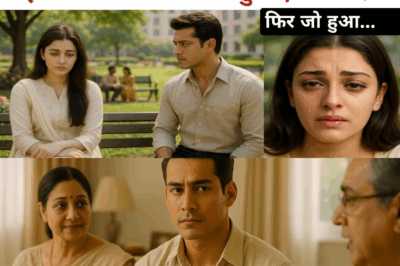Mumbai’s Flood Woes: A Stark Reality Check on the City’s Development and Governance
Introduction
Mumbai, revered as India’s financial capital and home to millions, often conjures images of towering skyscrapers, bustling streets, and dreams waiting to be fulfilled. Yet, every monsoon, the city’s sheen is washed away—quite literally—by debilitating floods that transform its roads into perilous rivers. Recent days have been no exception. Despite the promise of a smarter, more resilient metropolis, Mumbaikars find themselves navigating waterlogged roads, stalled trains, and inundated homes. The pressing question remains: Why do these issues persist, despite massive investments by the local government?
A Tale of Broken Promises
The Brihanmumbai Municipal Corporation (BMC)—India’s richest municipal body—has spent an astounding ₹8,700 crore ($1 billion) over the past four years on stormwater drainage projects alone. One would expect these expenditures to translate into efficient drainage systems and better preparedness against heavy rainfall. Yet, the grim reality tells another story. Only a few hours of torrential downpour on consecutive days was enough to paralyze the city’s infrastructure, with images of submerged roads and stranded vehicles flooding social media.
Where Did the Money Go?
Residents of upmarket localities like Dadar TT, where apartments are valued at upwards of 2-2.5 crore rupees, are left wading through waist-deep waters. The recurring monsoon chaos has left taxpayers questioning the transparency and efficacy of civic governance.
According to official data, BMC allocated ₹1,539 crore in 2022-23, and bumped the figure up to ₹2,570 crore in 2023-24, coinciding with the elections. This year, ₹1,930 crore has been earmarked for drainage improvements, with another ₹2,000 crore in the upcoming budget. What do residents have to show for it? Year after year, Mumbai’s streets morph into “water parks”—a bitter joke among locals frustrated with the lack of accountability.
A Matter of Accountability
What exacerbates public frustration is the evaporation of accountability. Elections to the BMC have not been conducted since 2022; political stalemates have led to extended caretaker administrations. While previous years allowed for direct questioning of local leaders, today fingers point in every direction, yet answers remain elusive. Maharashtra’s Chief Minister and Mumbai’s guardian ministers rarely face tough questions regarding civic preparedness or financial transparency.
The blame game, meanwhile, continues, often diverging attention from real issues to polarizing political distractions. Rather than addressing the dire need for infrastructure repairs or disaster resilience, discourse often veers towards temples, festivals, or controversies far removed from the pressing, everyday problems faced by ordinary citizens.
Everyday Hardships: The Human Cost
For Mumbaikars, the annual flooding is more than an inconvenience—it’s a recurrent disaster that brings personal, financial, and psychological suffering. Vehicles stall, homes flood, and small businesses incur losses running into thousands of rupees. Yet, the compensation or care from authorities is rare. Essential service providers and delivery workers—like Zomato and Swiggy riders—brave dangerous roads, risking accidents and even electrocution in waterlogged areas.
Public transport systems, from buses to local trains, bear heavy damage. Maintenance and repairs come from taxpayers’ pockets, but service interruptions cause immense trouble for commuters, especially those reliant on daily wages or long commutes from distant suburbs.
Even the newly inaugurated metro lines are not immune, with reports of water seepage into underground sections, forcing repeated closures and putting public safety at risk.
The Plight of the Vulnerable
While the affluent endure inconvenience, the city’s poor bear the brunt. Low-lying slums and informal settlements flood first and worst, risking lives and livelihoods. Essential utilities become inaccessible; contaminated water brings the spread of diseases; displacement and property loss pushes families deeper into poverty.
Hospitals, already stretched, face a surge in water-borne and vector-borne diseases. Meanwhile, city records note ‘zero address’ for the homeless—leaving the most vulnerable without recognition, let alone help.
Global Context vs. Ground Reality
Proponents of “development” tout Mumbai as a global city, but its infrastructure tells a different tale. City officials often cite examples from abroad, but few global metros collapse so routinely and spectacularly under seasonal pressure, especially after such massive public spending.
Why do cities like Singapore or Tokyo manage monsoons far better, despite similar challenges? The answer lies in accountable governance, transparent spending, and a relentless focus on sustainable city planning—not in hollow announcements or the mere existence of big budgets.
Deflection and Distraction
Why, then, does little change? Analysts point to a pattern of political deflection—where real, affective issues, like civic failure, are overshadowed by religious, ethnic, or cultural debates. Public discourse hops from one sensational issue to the next, conveniently sidestepping corruption or governance failures. As elections approach, narratives shift to more emotive, divisive topics, relegating public infrastructure to the back burner.
Toward a Culture of Questioning
The glaring disconnect between promises and outcomes highlights the need for stronger civic engagement. Mumbai’s middle class—often taxed and overburdened—must demand answers. Where has their money gone? Who bears responsibility for persistent flooding? What steps are being taken to prevent future mishaps?
Journalists and ground-level workers continue to highlight inconsistencies and failures at great personal risk, but until the larger discourse shifts towards systemic change, little is likely to improve.
Conclusion
Mumbai’s annual tryst with flooding is not an act of fate—but a glaring symptom of systemic neglect, mismanagement, and a lack of accountability. As billions get drained (literally and figuratively), it’s time for citizens to demand not just cleaner streets after every monsoon, but a cleaner, more transparent form of governance. Only then can Mumbai hope to stand tall—not just as India’s financial capital, but as a truly world-class, resilient city.
News
छोटे से जज़्बे की बड़ी जीत: सागर की कहानी
छोटे से जज़्बे की बड़ी जीत: सागर की कहानी वाराणसी की भीड़भाड़ वाली गलियों में एक 8 साल का चंचल…
खोई पहचान, मिले रिश्ते: मुंबई से दिल्ली तक आरुषि की तलाश
खोई पहचान, मिले रिश्ते: मुंबई से दिल्ली तक आरुषि की तलाश ताज कोर्टयार्ड, मुंबई का सबसे आलीशान रेस्टोरेंट, आज रात…
परदेस की आंधी: दूरी, विश्वासघात और एक नई शुरुआत की कहानी
परदेस की आंधी: दूरी, विश्वासघात और एक नई शुरुआत की कहानी मुंबई जैसे सपनों के शहर से सैंकड़ों किलोमीटर दूर,…
नेकी का लौटता सिला: सड़क पर भीख माँगता एक बेटा और किस्मत का करिश्मा
नेकी का लौटता सिला: सड़क पर भीख माँगता एक बेटा और किस्मत का करिश्मा रामलाल कभी मशहूर कारीगर हुआ करते…
भाई-बहन का ये बंधन: एक स्टेशन, एक मुलाकात, एक नई शुरुआत
भाई-बहन का ये बंधन: एक स्टेशन, एक मुलाकात, एक नई शुरुआत दिल्ली के भीड़भाड़ वाले रेलवे स्टेशन के बाहर जनवरी…
एक रात, एक रहस्य, एक जिंदगी बदल देने वाली मुठभेड़
एक रात, एक रहस्य, एक जिंदगी बदल देने वाली मुठभेड़ शहर की चमकती रोशनी के बीच हजारों कहानियां चलती हैं।…
End of content
No more pages to load











